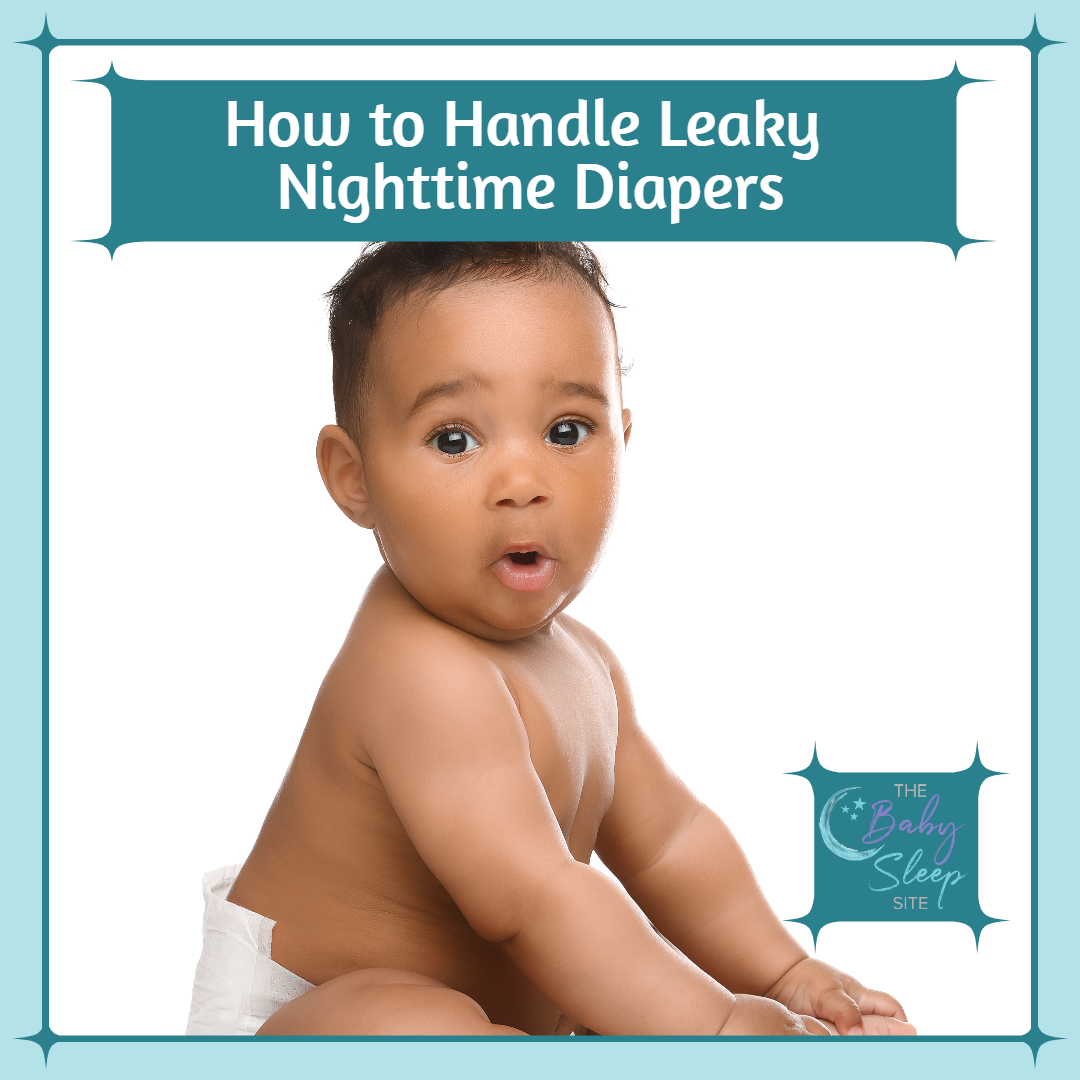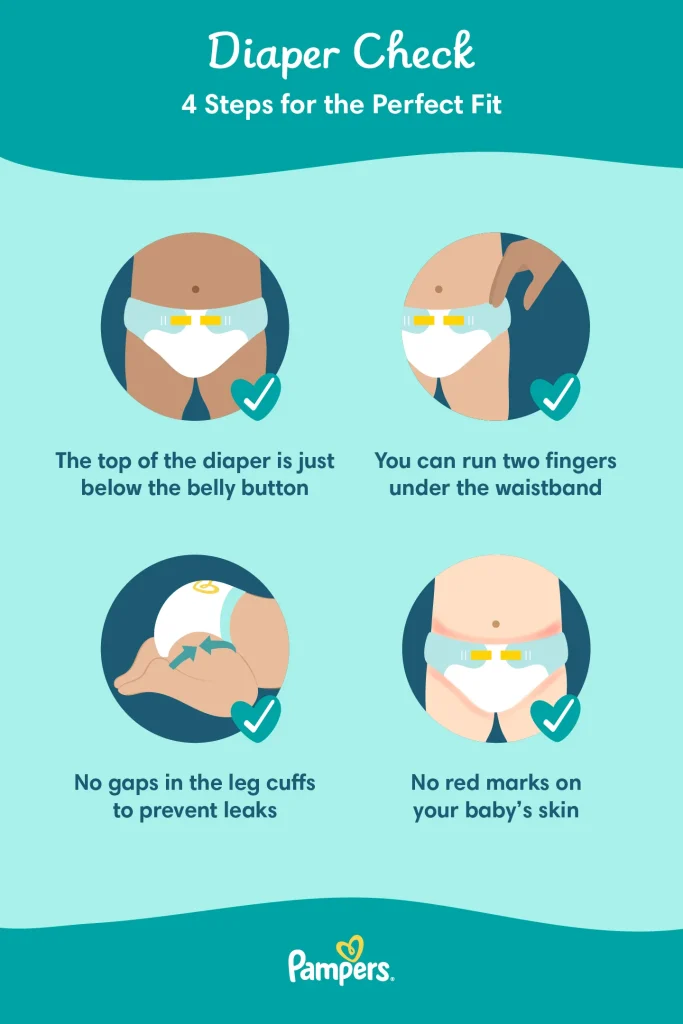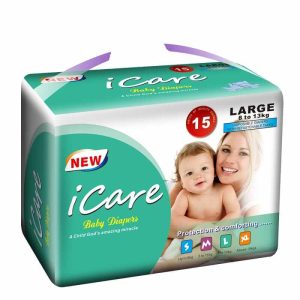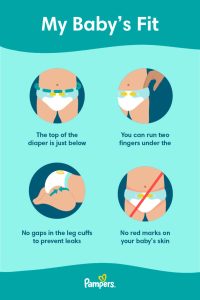Baby diapers leak due to improper fit or over-saturation. An incorrect size or insufficient absorbency often causes leaks.
Diaper leaks can be frustrating for both parents and babies. Ensuring the right diaper fit and absorbency is crucial. Each baby has unique needs, and choosing a diaper that matches their size and activity level helps prevent leaks. Parents should regularly check and change diapers to maintain dryness and comfort.
Understanding the causes of diaper leaks enables parents to select the best products for their babies. This proactive approach minimizes leaks and ensures a happier, more comfortable baby.

Credit: www.pampers.com
Common Causes
Baby diaper leaks can be frustrating for parents. Understanding the common causes can help prevent these leaks. This section explores the reasons behind baby diaper leaks. Let’s dive into the most frequent issues.
Incorrect Size
The size of the diaper is crucial. A diaper that’s too small won’t cover your baby properly. This can cause leaks from the sides or back. Too large diapers also pose a problem. They can leave gaps, letting pee or poop escape.
To find the right size, check the weight range on the diaper pack. Ensure the diaper fits snugly around the waist and thighs. If you notice red marks, the diaper may be too tight. Conversely, frequent leaks suggest a too-loose diaper.
Poor Absorption
Some diapers don’t absorb well. Poor absorption can cause leaks, especially during the night. A diaper with good absorption keeps your baby dry and happy.
Look for diapers with multiple layers. These layers help to lock in moisture. Gel-based diapers can provide better absorption. Also, consider changing the diaper brand if leaks persist.
| Common Causes | Impact |
|---|---|
| Incorrect Size | Leaks from gaps or tightness |
| Poor Absorption | Unable to hold moisture |
Choosing The Right Diaper
Choosing the right diaper is essential to prevent baby diaper leaking. Various factors influence diaper performance. The right size, material, and fit all play crucial roles.
Size Guide
Size is the most critical factor for a leak-proof diaper. A diaper that is too big or too small can cause leaks. Refer to the size guide below:
| Baby Weight (lbs) | Diaper Size |
|---|---|
| Up to 10 lbs | Newborn |
| 8-14 lbs | Size 1 |
| 12-18 lbs | Size 2 |
| 16-28 lbs | Size 3 |
| 22-37 lbs | Size 4 |
| 27+ lbs | Size 5 |
Always check the weight guidelines on the diaper package. Ensure the diaper fits snugly around the waist and thighs.
Material Matters
The material of the diaper affects comfort and absorption. Look for diapers made from breathable and absorbent materials.
- Cotton: Natural and soft, ideal for sensitive skin.
- Bamboo: Eco-friendly and highly absorbent.
- Synthetic materials: Offer high absorbency but may cause irritation.
Choose a material that suits your baby’s skin type. Avoid materials that cause rashes or discomfort.
Diapers with multiple layers provide better absorption. Ensure the diaper’s inner layer is soft and the outer layer is leak-proof.
Proper Diaper Fit
Ensuring a proper diaper fit can significantly reduce leaks. A well-fitted diaper hugs your baby’s body snugly, preventing gaps. This is key to keeping their clothes dry and your baby comfortable.
Waistband Check
The waistband should sit just below the belly button. It should not be too tight or loose. You should be able to slide one finger comfortably between the waistband and your baby’s skin.
If the waistband leaves red marks, it’s too tight. If it gaps, it’s too loose. A well-fitted waistband ensures no leaks from the top.
Leg Cuff Position
Proper leg cuff position is crucial. The cuffs should sit snugly around the baby’s thighs. Ensure the leg cuffs are pulled out, not tucked in.
If the cuffs are inside, leaks can occur. Check for gaps around the legs. If you see gaps, adjust the cuffs. A snug fit around the legs stops leaks from the sides.
Diaper Changing Frequency
Understanding the diaper changing frequency is crucial for preventing leaks. Babies have different needs based on their age. Changing diapers at the right times helps keep them comfortable and dry. Let’s explore how often you should change diapers for different ages and during nighttime.
Newborns Vs. Older Babies
Newborns need more frequent diaper changes. They tend to pee and poop often. This is because their bladder is small, and they feed frequently. Aim to change a newborn’s diaper every 2-3 hours. This helps keep their skin dry and prevent rashes.
Older babies may need fewer changes. As they grow, their bladder capacity increases. They start to have more predictable bowel movements. Typically, change an older baby’s diaper every 3-4 hours. Always check for wetness and change immediately if needed.
Nighttime Changes
Nighttime can be tricky for diaper changes. Waking up your baby for a change might disrupt their sleep. Use overnight diapers designed for extended use. These diapers have extra absorbency to last through the night.
If your baby wakes up at night, check the diaper. Change it if it’s very wet or soiled. For newborns, you may need to change their diaper once or twice during the night. For older babies, one change before bedtime can be enough.
| Age Group | Diaper Change Frequency |
|---|---|
| Newborns | Every 2-3 hours |
| Older Babies | Every 3-4 hours |
- Check diapers regularly.
- Use overnight diapers for extended use.
- Change immediately if wet or soiled.
- Consider a nighttime change for newborns.
Diapering Techniques
Baby diaper leaking can be frustrating. Proper diapering techniques can help. In this section, we’ll discuss two key techniques: Snug Fit and Avoiding Gaps. These techniques will ensure your baby stays dry and comfortable.
Snug Fit
A snug fit prevents leaks. Ensure the diaper is tight but not too tight. Here’s a simple way to check:
- Slide a finger between the diaper and your baby’s waist.
- If it’s too tight, adjust the tabs for comfort.
- Ensure the leg cuffs are properly fitted around the thighs.
Too loose, and leaks can happen. Too tight, and it can cause discomfort.
Avoiding Gaps
Gaps can cause leaks. Check for gaps around the legs and waist. Follow these steps:
- Run your fingers along the edges of the diaper.
- Smooth out any wrinkles or folds.
- Ensure the leg cuffs are pulled out and not tucked in.
Gaps can let moisture escape. A properly adjusted diaper can prevent this.
Remember, regular checks can help maintain a snug fit. Happy diapering!

Credit: www.babycubby.com
Signs You Need A Diaper Change
As a parent, spotting the signs of a needed diaper change is crucial. Knowing these signs helps prevent diaper leaks and keeps your baby comfortable. This guide will highlight key indicators that your baby’s diaper needs changing.
Wetness Indicators
Modern diapers come with wetness indicators. These are lines or patterns that change color when the diaper is wet. Check the diaper’s front or back for these lines. If the line has changed color, it’s time for a change.
| Indicator Type | Change Needed |
|---|---|
| Yellow Line | No |
| Blue Line | Yes |
Baby’s Behavior
Your baby’s behavior can also signal a needed diaper change. Here are some behaviors to watch for:
- Fussiness: Babies often cry or fuss when they need a change.
- Discomfort: Watch for squirming or pulling at the diaper.
- Unusual Smells: A strong smell may indicate a dirty diaper.
- Interrupted Sleep: A wet diaper can wake a sleeping baby.
Understanding these signs helps keep your baby comfortable and dry. Regular checks and prompt changes prevent leaks and rashes. Always keep an eye on wetness indicators and your baby’s behavior.
Dealing With Heavy Wetters
Parents often face the challenge of dealing with heavy wetters. These are babies who produce more urine than average. This can lead to frequent diaper leaks. Understanding the right strategies can help you manage this issue effectively.
Extra Absorbent Diapers
Extra absorbent diapers are designed to hold more liquid. They are perfect for heavy wetters. These diapers come with special layers that absorb quickly and lock moisture away.
Look for diapers with multiple absorption layers. These layers help keep your baby dry for longer periods. Some brands even offer overnight diapers. These are specially designed for extended wear.
Here’s a quick comparison:
| Brand | Absorbency Level | Special Features |
|---|---|---|
| Brand A | High | Overnight protection |
| Brand B | Medium | Extra layers |
| Brand C | High | Quick absorption |
Doubling Up
Another effective method is doubling up. This involves using two diapers at once. Place one diaper on your baby as usual. Then, add a second diaper over the first. This provides extra protection against leaks.
Follow these steps to double up:
- Put the first diaper on your baby.
- Ensure it fits snugly around the legs and waist.
- Place a second diaper over the first one.
- Adjust the second diaper for a secure fit.
Doubling up is useful during night-time or long trips. It ensures your baby stays dry and comfortable.

Credit: www.babysleepsite.com
Addressing Skin Sensitivity
Addressing skin sensitivity is crucial for preventing baby diaper leaks. Sensitive skin can cause discomfort and lead to more leaks. Ensuring the right products can help manage this issue effectively.
Choosing Hypoallergenic Diapers
Hypoallergenic diapers are designed for babies with sensitive skin. They are free from harsh chemicals and fragrances. Look for diapers made from natural materials. These materials are gentle on the skin and reduce irritation.
Consider diapers with breathable layers. These allow air to circulate and keep the skin dry. A dry bottom means fewer leaks. Hypoallergenic diapers often have a better fit, preventing gaps and leaks.
Using Barrier Cream
Barrier creams create a protective layer on your baby’s skin. This layer prevents irritation from moisture. Apply a thin layer during each diaper change.
Choose a cream with natural ingredients. Ingredients like zinc oxide and petrolatum are effective. They soothe the skin and prevent rashes. Consistent use can help maintain skin health and reduce leaks.
Here is a simple table to help you choose the right cream:
| Ingredient | Benefit |
|---|---|
| Zinc Oxide | Soothes and protects |
| Petrolatum | Creates a moisture barrier |
| Natural Oils | Nourishes the skin |
Using these methods can help in managing skin sensitivity and preventing diaper leaks. Ensure the products you choose are suitable for your baby’s skin type.
Frequently Asked Questions
Why Do Baby Diapers Leak At Night?
Night leaks often happen due to insufficient absorbency. Opt for overnight diapers designed for extra absorbency. Check the diaper fit and adjust as needed. Ensure the diaper is correctly positioned without gaps.
How To Prevent Diaper Leaks?
Ensure the diaper fits snugly around the waist and legs. Use the right size and change diapers frequently. Overnight diapers can offer extra protection. Check for proper positioning to avoid gaps.
Are Diaper Leaks Common?
Yes, diaper leaks are common, especially at night or during heavy wetting. Correct sizing and frequent changes help reduce leaks. Using high-absorbency diapers can also be beneficial.
Can Diaper Size Cause Leaks?
Yes, incorrect diaper size can cause leaks. A diaper that’s too small or too large won’t fit properly. Always choose the right size based on your baby’s weight and age.
Conclusion
Understanding why your baby’s diaper leaks can bring much-needed relief. Proper fit, timely changes, and quality materials are key. Always monitor for signs of discomfort or leaks. Addressing these issues ensures your baby stays dry and happy. Keep these tips in mind for a more pleasant diapering experience.




